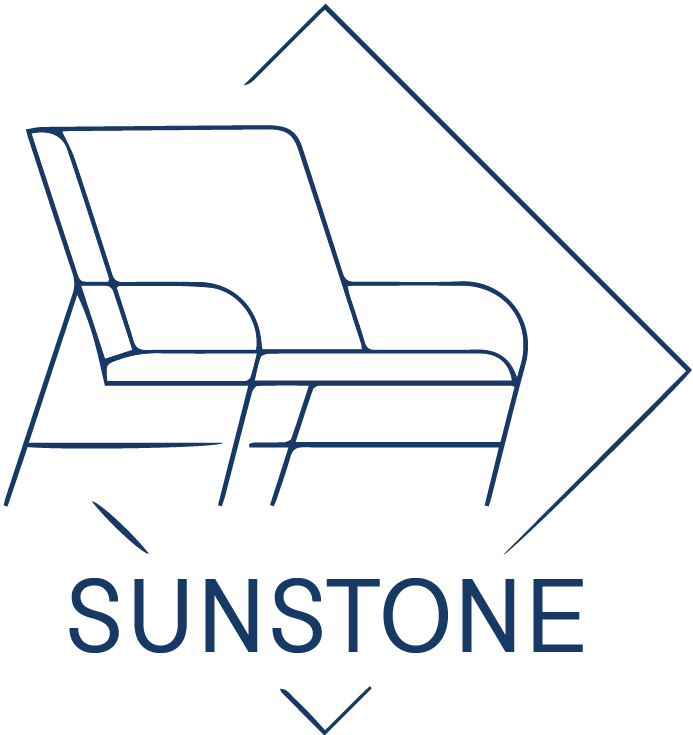How To Replace Mesh on Outdoor Chairs
Outdoor mesh chairs are popular for their breathable design, ergonomic comfort, and modern look. Over time, however, exposure to sun, rain, and weight stress can cause the mesh to sag, tear, or fade. Instead of replacing the entire chair, you can easily restore it by replacing the mesh fabric. With the right materials and a few basic tools, you can make your Outdoor Chairs look and feel brand new again.
Table of Contents
- Understanding Outdoor Mesh Chairs
- Step 1: Gather the Necessary Tools and Materials
- Step 2: Measure and Cut the Replacement Mesh
- Step 3: Remove the Old Mesh
- Step 4: Install the New Mesh
- Step 5: Tighten and Align
- Step 6: Final Finishing and Maintenance
- Common Mistakes to Avoid
- Recommended outdoor furniture
- Conclusion
Understanding Outdoor Mesh Chairs
Mesh outdoor chairs typically use PVC-coated polyester, textilene, or vinyl materials stretched tightly across a metal or aluminum frame. These fabrics are weather-resistant and quick-drying, but after years of use, they can lose tension or develop cracks. Replacing the mesh restores both comfort and support, ensuring that the chair remains sturdy and visually appealing.
Step 1: Gather the Necessary Tools and Materials
Before you begin, collect everything you’ll need to replace the mesh properly.
You will need:
Replacement mesh fabric (Textilene or PVC-coated polyester)
Measuring tape
Screwdriver or Allen wrench
Scissors or utility knife
Pliers
Rubber mallet (optional)
Replacement spline (vinyl cord for fabric track)
Sewing machine or heavy-duty fabric adhesive (optional)
Always select UV-resistant, waterproof mesh fabric to ensure the replacement lasts under outdoor conditions.
Step 2: Measure and Cut the Replacement Mesh
Accurate measurement is key to achieving a snug fit. Measure the width and length of the existing mesh panel between the frame rails. Subtract about 1 inch from the width to allow for fabric stretch when installed, and add 1 inch to the length to provide extra trimming room.
If possible, remove the old mesh intact and use it as a cutting template. Cut the new fabric to match the dimensions, making sure the edges are straight.
| Measurement Type | Description | Adjustment | Purpose |
|---|---|---|---|
| Width | Inner edge to inner edge | -1 inch | Ensures tight fit |
| Length | Top to bottom rail | +1 inch | Allows trimming and adjustment |
| Spline Size | Fits into side groove | Match original | Holds mesh securely |
Step 3: Remove the Old Mesh
Lay the chair on a flat surface. Use a screwdriver or Allen wrench to remove bolts securing the side rails. Once loosened, carefully separate the rails from the frame. Pull out the old spline and slide the mesh out of the channels. If the mesh is brittle or torn, use scissors or pliers to remove it in sections.
Inspect the frame for rust or debris, and clean it thoroughly before installing the new mesh.
Step 4: Install the New Mesh
Lay the new mesh fabric flat with the smooth side facing up. Insert the spline into the fabric edges if your chair design includes a spline channel. If your mesh doesn’t have a sewn hem, fold the fabric edge about ½ inch and sew a seam or use a strong outdoor fabric adhesive to form a channel for the spline.
Slide one side of the spline and mesh into the first rail channel, then align the second side. Keep the fabric centered and evenly tensioned as you slide it in. If necessary, use a rubber mallet to gently tap the rails into place while tightening the screws gradually.
For chairs with direct clip or bolt attachments (no spline system), stretch the mesh across the frame manually and secure it with the bolts or clips, ensuring it remains taut and wrinkle-free.
Step 5: Tighten and Align
Once both sides of the mesh are secured, start tightening the screws evenly from the top to the bottom. Avoid overtightening, which could cause uneven tension or rip the fabric.
Check the alignment of the mesh — it should look flat, smooth, and symmetrical. Trim any excess material from the edges using a utility knife or scissors.
Step 6: Final Finishing and Maintenance
After installation, wipe the frame and new mesh with a damp cloth to remove fingerprints or dust. Allow the chair to sit for 24 hours before heavy use to let the fabric settle naturally.
To maintain your new mesh chairs:
Clean them regularly with mild soap and water to prevent dirt buildup.
Store them in a shaded or covered area during heavy rain or winter.
Apply a UV-protective spray every few months to extend fabric life.
Avoid placing sharp objects or heavy loads on the mesh surface.
Common Mistakes to Avoid
Incorrect measurements: Even a ½-inch error can affect the fabric’s tension.
Reusing old spline: Old splines lose flexibility and may not hold the fabric properly.
Skipping cleaning: Dirt or rust on the frame can shorten the lifespan of the new mesh.
Overstretching: Excessive tension can distort the frame or damage the fabric.
Recommended outdoor furniture
For long-term durability and low-maintenance outdoor seating, Sunstone Outdoor offers an extensive range of mesh and sling chairs made with UV-stabilized fabrics and corrosion-resistant aluminum frames. Our designs combine ergonomic comfort with weatherproof construction, ensuring lasting style and performance even under harsh outdoor conditions.
Conclusion
Replacing the mesh on outdoor chairs is a simple and rewarding DIY project that restores comfort, support, and beauty to your outdoor living space. By measuring accurately, installing carefully, and maintaining the new fabric properly, you can extend your chair’s lifespan for many years. For those seeking ready-made, maintenance-free solutions, premium mesh furniture from Sunstone Outdoor provides exceptional durability and timeless appeal for any patio or garden setting.

